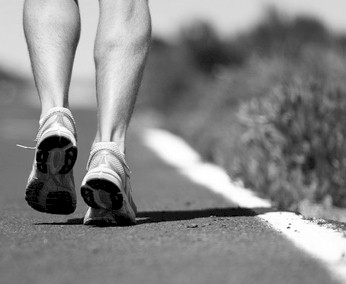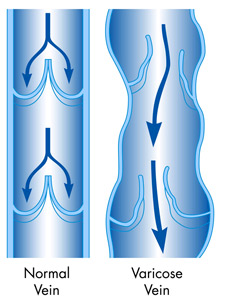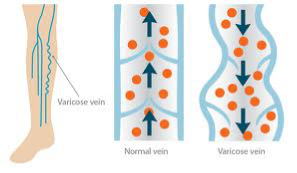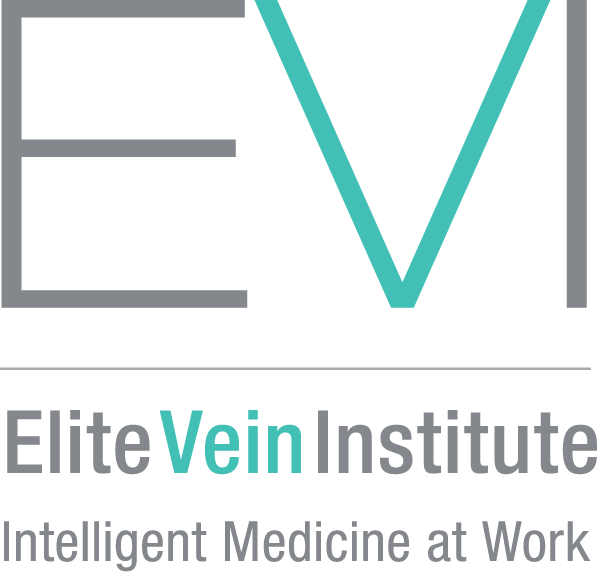About 80 Million Americans suffer from varicose veins-those bulging veins that you see on the surface across the legs and feet. It turns out that most do not know that you can now treat them in about 15 minutes and it is not painful and it is done right here in the office. The procedure is cutting edge and covered by medicare and most major insurances.

VEIN FAQs


Varicose Vein Practice
What conditions do you treat?
At Elitemedizin and Veins, Dr. Anne Luhan and her team treat venous insufficiency which causes varicose veins, spider veins, achy legs, swollen ankles, leg cramps, restless legs and even venous ulcers.
What are varicose veins?

It is VERY important to know that varicose veins are not just a cosmetic problem. They can be not only very painful, but life threatening.
Your legs carry a network of veins. A healthy vein contains valves which open and close to assist the return of blood from the toes to the heart. Vein disease and varicose veins are caused by damaged or diseased valves which result in backward flow of blood in your legs. This condition is called venous reflux.
What are symptoms of varicose veins?

– Pain
-Achiness
-A heavy feeling in the legs relieved by elevation
-Veins that bulge at the skin surface
-Itching
-Restless Legs
-Discoloration of the legs near the ankles
-A rash or skin opening on the ankles or lower legs
Am I at risk?
Varicose Veins are largely hereditary. If your mother, father, grandmother had varicose veins you are at risk to develop them as well. The following scenarios may put you at risk as well:
– Pregnancy
– Obesity
– Female Hormones
– Prolonged periods of standing during the day
– Prolonged periods of sitting during the day
How are varicose veins diagnosed?
Venous Ultrasound is the Gold Standard for diagnosing diseased veins in your legs. Many people with vein disease don’t have any visible varicose veins and only the symptoms of vein disease. Ultrasound is non-invasive and clearly shows the diseased veins underneath the skin.

How are they treated?
MOCA (mechanical occlusion, chemically assisted):
The Clarivein procedure (also known as MOCA) is performed with 0.5 mm skin incision. Under ultrasound guidance, a rotating catheter is inserted into the saphenous vein. After an injection of liquid sclerosant, the saphenous vein is closed off. Since this procedure does not use heat or laser technology, there is no need to inject fluid around the vein during treatment, thus no need for further needle sticks.
The Clarivein procedure can be performed purely under a local anaesthetic on a small area of skin, in a procedure room. Patients report a ticklish sensation during the procedure with minimal discomfort.
Venaseal Closure System
The VenaSeal™ closure system constitutes the latest technology in the treatment of venous disease. It is the only non-tumescent, non-thermal, non-sclerosant procedure that uses a medical adhesive delivered into the vein to close the vein. This unique approach eliminates the need for needle sticks, allows the treatment of several large veins at once and the patient does not need to wear compression stockings!
View the Benefits of VenaSeal Closure as seen on Dr. Oz
Endovenous Ablation
Endovenous ablation is a revolutionary treatment for varicose veins. The treatment involves threading a long electrode up the vein and then using radio frequency waves to seal the vein until it collapses and closes. The procedure is done without anesthesia and there is little to no pain. The treatment takes about 15 minutes with a success rate of over 97%.
Sclerotherapy
A needle is used to treat both varicose and spider veins. A tiny needle is used to inject a medication that irritates the lining of the vein. In response, the vein collapses and is reabsorbed. Surface veins usually are no longer visible. Depending on the type and number of veins being treated, you may need anywhere from one to several sclerotherapy sessions, and have several injections per session. Normal activities may be resumed after sclerotherapy treatment.
Don’t I need my veins?
Yes, veins are necessary for blood return from the legs to the heart. Venous ablation treats only the abnormal vein that is allowing blood to flow backwards. Since this vein has lost its ability to carry blood in the correct direction, it is no longer needed.
Is it painful?
The amount of energy delivered to the vein is actually very small and only affects the local vein wall. At Elitemedizin, we use local anesthesia (like your dentist), but nothing stronger is generally needed. Typically, patients feel better almost right away. As they walk out, they feel lighter, they no longer have that heavy pressure inside the veins.
Will insurance pay for my treatment?
Ultrasound evaluation and Endovenous thermal ablation are office-based procedures that are covered by Medicare and most major insurance carriers. Elitemedizin will work with you and your insurance carrier. Patients with a high deductible or choosing the cash option, are offered a bundled pricing of 20% off the Medicare rate.
